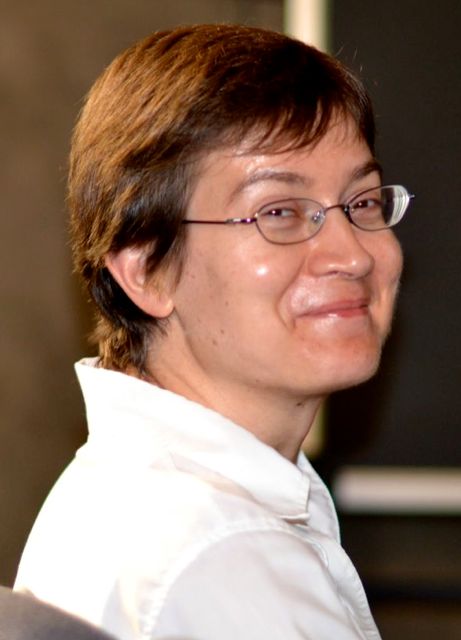Studying at the University of Verona
Here you can find information on the organisational aspects of the Programme, lecture timetables, learning activities and useful contact details for your time at the University, from enrolment to graduation.
Academic calendar
The academic calendar shows the deadlines and scheduled events that are relevant to students, teaching and technical-administrative staff of the University. Public holidays and University closures are also indicated. The academic year normally begins on 1 October each year and ends on 30 September of the following year.
Course calendar
The Academic Calendar sets out the degree programme lecture and exam timetables, as well as the relevant university closure dates..
| Period | From | To |
|---|---|---|
| I semestre | Oct 4, 2010 | Jan 31, 2011 |
| II semestre | Mar 1, 2011 | Jun 15, 2011 |
| Session | From | To |
|---|---|---|
| Sessione straordinaria | Feb 1, 2011 | Feb 28, 2011 |
| Sessione estiva | Jun 16, 2011 | Jul 29, 2011 |
| Sessione autunnale | Sep 1, 2011 | Sep 30, 2011 |
| Session | From | To |
|---|---|---|
| Sessione autunnale | Oct 20, 2010 | Oct 20, 2010 |
| Sessione straordinaria | Dec 14, 2010 | Dec 14, 2010 |
| Sessione invernale | Mar 23, 2011 | Mar 23, 2011 |
| Sessione estiva | Jul 18, 2011 | Jul 18, 2011 |
| Period | From | To |
|---|---|---|
| All Saints | Nov 1, 2010 | Nov 1, 2010 |
| National holiday | Dec 8, 2010 | Dec 8, 2010 |
| Christmas holidays | Dec 22, 2010 | Jan 6, 2011 |
| Easter holidays | Apr 22, 2011 | Apr 26, 2011 |
| National holiday | Apr 25, 2011 | Apr 25, 2011 |
| Labour Day | May 1, 2011 | May 1, 2011 |
| Local holiday | May 21, 2011 | May 21, 2011 |
| National holiday | Jun 2, 2011 | Jun 2, 2011 |
| Summer holidays | Aug 8, 2011 | Aug 15, 2011 |
Exam calendar
Exam dates and rounds are managed by the relevant Science and Engineering Teaching and Student Services Unit.
To view all the exam sessions available, please use the Exam dashboard on ESSE3.
If you forgot your login details or have problems logging in, please contact the relevant IT HelpDesk, or check the login details recovery web page.
Should you have any doubts or questions, please check the Enrollment FAQs
Academic staff
Eleuteri Michela
 massimo.guerriero@univr.it
massimo.guerriero@univr.it
 luca.vigano@univr.it
luca.vigano@univr.it
Study Plan
The Study Plan includes all modules, teaching and learning activities that each student will need to undertake during their time at the University.
Please select your Study Plan based on your enrollment year.
1° Year
| Modules | Credits | TAF | SSD |
|---|
2° Year activated in the A.Y. 2011/2012
| Modules | Credits | TAF | SSD |
|---|
3° Year activated in the A.Y. 2012/2013
| Modules | Credits | TAF | SSD |
|---|
Due insegnamenti a sceltaUn insegnamento a scelta| Modules | Credits | TAF | SSD |
|---|
| Modules | Credits | TAF | SSD |
|---|
| Modules | Credits | TAF | SSD |
|---|
Due insegnamenti a sceltaUn insegnamento a sceltaLegend | Type of training activity (TTA)
TAF (Type of Educational Activity) All courses and activities are classified into different types of educational activities, indicated by a letter.
Algorithms (2011/2012)
The teaching is organized as follows:
Learning outcomes
Module: LABORATORIO DI PROGRAMMAZIONE II
-------
Objective of the course is to provide the basic knowledge to develop algorithms and use applications relevant to bioinformatics.
Module: ALGORITMI PER BIOINFORMATICA
-------
Objective of the course is to teach the basics in design and analysis of algorithms with emphasis on problems of interests for bioinformatics.
Program
Module: LABORATORIO DI PROGRAMMAZIONE II
-------
Java implementation of dynamic data structures and relevant algorithms. Recursion. Interfaces and packages. The student will acquire the necessary knowledge through assisted software development and realizing specific projects. Development of algorithms for sorting, search (greedy and exhaustive) and main algorithms on graphs, applied to problems that are relevant to bioinformatics. Basic functionalities of numerical tools (MATLAB) and spreadsheets for data visualization and statistical analysis.
Module: ALGORITMI PER BIOINFORMATICA
-------
Sorting algorithms. Divide-and-conquer algorithms. Data structures. Graph algorithms. Search algorithms. Greedy algorithms. Dynamic programming. Algorithms and complexity: big-O notation.
Bibliography
| Author | Title | Publishing house | Year | ISBN | Notes |
|---|---|---|---|---|---|
| Neil C. Jones, Pavel A. Pevzner | An introduction to bioinformatics algorithms (Edizione 1) | MIT Press | 2004 | 0-262-10106-8 | |
| Thomas H. Cormen, Charles E. Leiserson, Ronald L. Rivest, Clifford Stein | Introduction to Algorithms (Edizione 3) | MIT Press | 2009 | 978-0-262-53305-8 |
Examination Methods
Module: LABORATORIO DI PROGRAMMAZIONE II
-------
The grade in "Algorithms" is given by 50% AB + 50% LPII, where AB is the grade in "Algorithms for Bioinformatics" and LPII is the grade in "Programming Laboratory II".
Following the University Handbook for Teaching, beginning with AcaYr 2011-12, the "Algorithms" course follows the model "two or more intermediate tests, one final test and three full exams" so that there are altogether four possibilities to pass the class.
With multiple tests: AB = 35% C1 + 40% C2 + 25% CC, LPII = 50% P + 50% L, where C1 (intermediate test) and C2 (final test) are written tests in class, CC is the overall grade in the homeworks (intermediate test), P is a project in the lab (intermediate test) and L is a lab test (intermediate test). The grade thus generated is registered at the first exam session in February.
With single tests: AB = 100% E, LPII = 100% EL, where E is a written test, and EL is a lab test, each hard enough to match the difficulty of C1 + C2 + CC and P + L, respectively. Two full exams are offered in February, and one in June. In the February session it is possible to take E at the first full exam and EL at the second one or vice versa. In June one has to take E and EL together.
Registration: it is not possible to reject a grade and all grades are registered. Withdrawal: Students may withdraw by informing the instructor. All tests and projects are to be carried out individually. Cheating is strictly forbidden and will determine lowering of grades for all students involved.
Module: ALGORITMI PER BIOINFORMATICA
-------
The grade in "Algorithms" is given by 50% AB + 50% LPII, where AB is the grade in "Algorithms for Bioinformatics" and LPII is the grade in "Programming Laboratory II".
AB = 35% C1 + 40% C2 + 25% CC, LPII = 50% P + 50% L, where C1 is a written test (midterm exam), C2 is a written test (final exam), CC is the overall grade in the homeworks, P is a project in the lab and L is a lab test. The grade thus generated is registered at the first exam session in February.
Alternatively, AB = 100% E, LPII = 100% EL, where E is a written test, and EL is a lab test, each hard enough to match the difficulty of C1 + C2 + CC and P + L, respectively.
Registration: all grades are registered. Withdrawal: Students may withdraw by informing the instructor. All tests and projects are to be carried out individually. Cheating is strictly forbidden and will determine lowering of grades for all students involved.
Type D and Type F activities
Modules not yet included
Career prospects
Module/Programme news
News for students
There you will find information, resources and services useful during your time at the University (Student’s exam record, your study plan on ESSE3, Distance Learning courses, university email account, office forms, administrative procedures, etc.). You can log into MyUnivr with your GIA login details: only in this way will you be able to receive notification of all the notices from your teachers and your secretariat via email and soon also via the Univr app.
Graduation
List of theses and work experience proposals
| Stage | Research area |
|---|---|
| Correlated mutations | Various topics |
Attendance
As stated in the Teaching Regulations for the A.Y. 2022/2023, attendance at the course of study is not mandatory.

 +39 045 802 7949
+39 045 802 7949

























